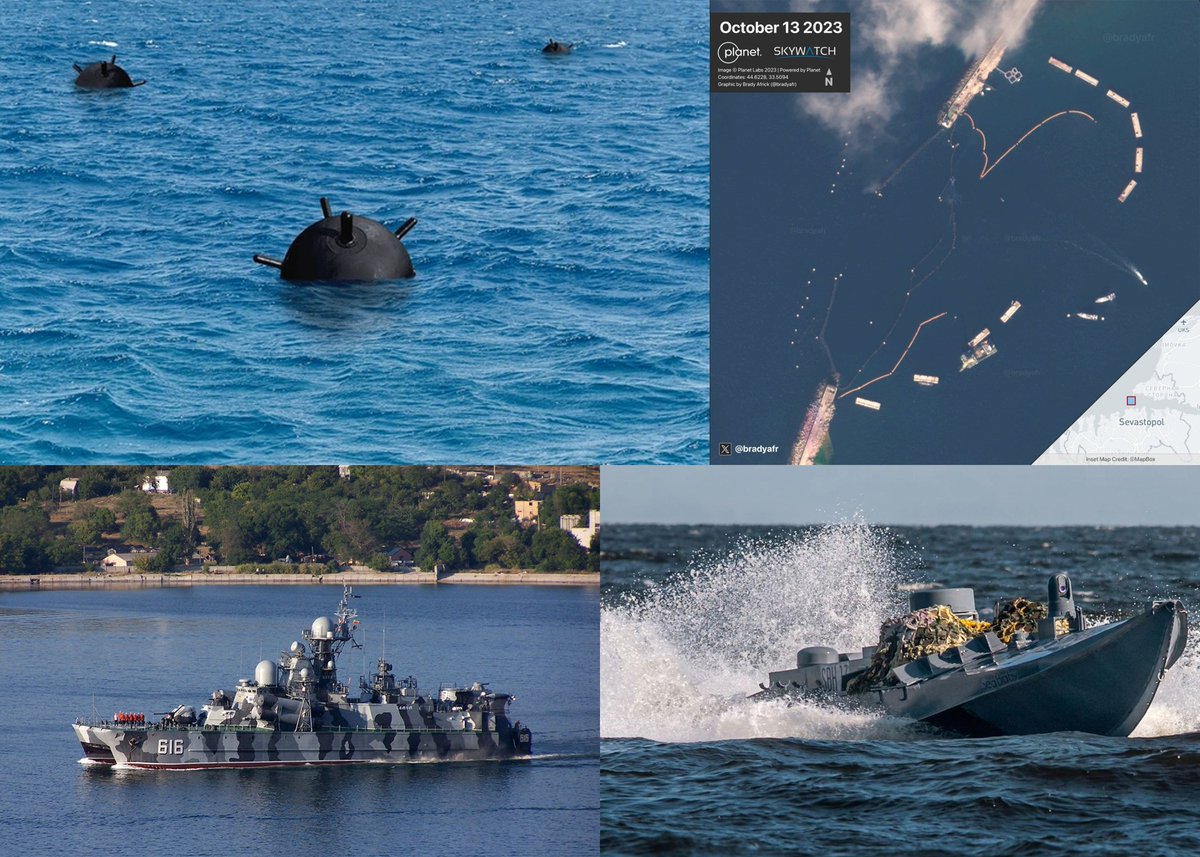Another Ukrainian development related to sea drones has become known. Ukrainian sea drones have learned to mine the sea routes of Russian ships. Thanks to this tactic, four enemy vessels were sunk. As reported in the article by The Wall Street Journal, the Russians,
1/7
1/7

frightened by the raids of sea drones, built large barriers at the entrance to the Sevastopol Bay, so the Ukrainians came up with alternative operations - the installation of sea mines. Special SeaBaby have learned to install bottom mines made of plastic, weighing about
2/7
2/7

180 kg. They are difficult to find, since they lie in the silt under the shallow water, use acoustic and electromagnetic sensors to detect the presence of the ship, causing a detonation. For 1.5 months, a team of Ukrainian special services tracked the routes of sea ships
3/7
3/7

and civilian transport before sending SeaBaby to install two mines. On September 14, the missile corvette "Samum" was blown up by such a mine. Over the following weeks, SeaBaby laid about 15 more mines. During one of the flights, the drone opened fire with a grenade launcher
4/7
4/7

on Russian Raptor-class patrol boats, damaging them. On October 11, the large patrol boat Pavel Derzhavin was damaged while entering Sevastopol Bay. It was limping into port for inspection. On October 13, the vessel was heading to another port for repairs when it hit a mine.
5/7
5/7

A large tugboat sent to rescue the ship also blew up. A few days later, an explosion occurred on a modern mine countermeasure ship, one of two in Russian service.
6/7
6/7

7/7 Source: wsj.com/world/naval-dr…
• • •
Missing some Tweet in this thread? You can try to
force a refresh






















